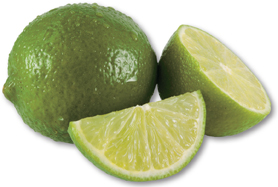▸ Beneficial Effects Some of the variation produced by mutations can be highly advantageous to an organism or species.  Mutations often produce proteins with new or altered functions that can be useful to organisms in different or changing environments. For example, mutations have helped many insects resist chemical pesticides. And some have enabled microorganisms to adapt to new chemicals in the environment.
Mutations often produce proteins with new or altered functions that can be useful to organisms in different or changing environments. For example, mutations have helped many insects resist chemical pesticides. And some have enabled microorganisms to adapt to new chemicals in the environment.
Over the past 20 years, mutations in the mosquito genome have made many African mosquitoes resistant to the chemical pesticides once used to control them. This may be bad news for humans, but it is highly beneficial to the insects themselves. Beneficial mutations occur in humans, too, including ones that increase bone strength and density, making fractures less likely, and mutations that increase resistance to HIV, the virus that causes AIDS.
Plant and animal breeders often make use of “good” mutations. For example, when a complete set of chromosomes fails to separate during meiosis, the gametes that result may produce triploid (3N) or tetraploid (4N) organisms. The condition in which an organism has extra sets of chromosomes is called polyploidy. Polyploid plants are often larger and stronger than diploid plants. Important crop plants—including bananas and the limes shown in Figure 13–14—have been produced this way. Polyploidy also occurs naturally in citrus plants, often through spontaneous mutations.
 In Your Notebook List five examples of mutations. Classify each as neutral, harmful, or helpful, and explain your reasoning.
In Your Notebook List five examples of mutations. Classify each as neutral, harmful, or helpful, and explain your reasoning.

FIGURE 13–14 Polyploid Plants The fruit of the Tahiti lime is seedless, a result of polyploidy. Changes to the ploidy number of citrus plants can affect the size and strength of the trees as well as the quality and seediness of their fruit.
13.3 Assessment

-
Review Describe the two main types of mutations.
Explain What is a frameshift mutation? Give an example.
Infer The effects of a mutation are not always visible. Choose a species, and explain how a biologist might determine whether a mutation has occurred and, if so, what type of mutation it is.
-
Review List three effects mutations can have on genes.
Apply Concepts What is the significance of mutations to living things?
VISUAL THINKING
Make a compare/contrast table to organize your ideas about gene mutations and chromosomal mutations. Then use your table to write a paragraph comparing and contrasting these two kinds of mutations.

Table of Contents
- Formulas and Equations
- Applying Formulas and Equations
- Mean, Median, and Mode
- Estimation
- Using Measurements in Calculations
- Effects of Measurement Errors
- Accuracy
- Precision
- Comparing Accuracy and Precision
- Significant Figures
- Calculating With Significant Figures
- Scientific Notation
- Calculating With Scientific Notation
- Dimensional Analysis
- Applying Dimensional Analysis




